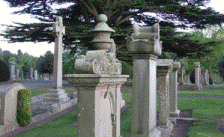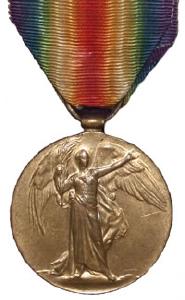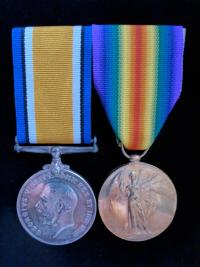- Award: Allied Victory 1914-19 Medal was awarded to Alexander Miller chiropodist on 11 November 1918 British War Medal 1914-18
Victory Medal.3
- Award*: Allied Victory 1914-19 Medal was awarded to Walter Edward Adamson Neave steamship purser after 14 March 1919.1
- Award: Allied Victory 1914-19 Medal was awarded to John Dickson confectioner & fruiterer on 28 January 1921 at Perth, Perthshire, Scotland,
 .4
.4 - Note for Web*: Allied Victory 1914-19 Medal Victory Medal (United Kingdom)
From Wikipedia, the free encyclopedia
The Victory Medal (also called the Inter-Allied Victory Medal) is a United Kingdom campaign medal. The basic design and ribbon was also adopted by Belgium, Brazil, Cuba, Czechoslovakia, France, Greece, Italy, Japan, Portugal, Romania, Siam, Union of South Africa and the USA in accordance with the decision of the Inter-Allied Peace Conference at Versailles (a 'Winged Victory). A particular form of this historic Greek monument was chosen by each nation, except the nations in the Far East who issued the medal but with a different design. The dates of the war were in every case 1914 to 1918, except that of the British Empire, which gave the dates as illustrated (1914 to 1919).
The medal was issued to all those who received the 1914 Star or the 1914-15 Star, and to most of those who were awarded the British War Medal - it was never awarded singly. These three medals were sometimes irreverently referred to as Pip, Squeak and Wilfred.
Eligibility
To qualify for the Victory medal one had to be mobilised in any service and have entered a theatre of war between 5 August 1914 and 11 November 1918. Women qualified for this and the earlier two medals, for service in nursing homes and other auxiliary forces.
It was also awarded to members of the British Naval mission to Russia 1919 - 1920 and for mine clearance in the North Sea between 11 November 1918 and 30 November 1919.
Description
The Victory Medal issued within the British Empire as a result of an international agreement at the Inter-allied Peace Conference immediately preceding the Treaty of Versailles is a 36mm diameter circular copper medal, lacquered in bronze. The obverse in the British Empire medal shows the winged, full-length, full-front, figure of 'Victory' (or 'Victoria'), also figuring in all other medals by the nations as cited, but in this case (the British Empire) with her left arm extended and holding a palm branch in her right hand, this being in common with the previously (pre-war) created British Empire statue in the Victoria Memorial, London (which contains also a statue of the Queen and Empress with the title 'VICTORIA REGINA IMPERATRIX').
The reverse has the words ‘THE GREAT / WAR FOR / CIVILISATION / 1914-1919' in four lines, all surrounded by a laurel wreath.
The 39mm wide ribbon has a ‘two rainbow' design, with the violet from each rainbow on the outside edges moving through to a central red stripe where both rainbows meet.
Those personnel "Mentioned in Despatches" between 4 August 1914 and 10 August 1920 wear an oak leaf on the medal's ribbon.
International award
As well as the United Kingdom, a significant number of allied and associated countries involved in the conflict against the Austro-German alliance issued a Victory Medal.
The proposition of such common award was first made by French marshal Ferdinand Foch who was supreme commander of the allied force during first world war. Each medal in bronze has the same diameter (36 mm) and ribbon (double rainbow) but with a national design representing a winged victory except for Japan and Siam where the concept of a winged victory was not culturally relevant..5 - Note for Web: Allied Victory 1914-19 Medal Also known as 'Wilfred'
It was decided that each of the allies should each issue their own bronze victory medal with a similar design, similar equivalent wording and identical ribbon.
The British medal was designed by W. McMillan. The front depicts a winged classical figure representing victory.
Approximately 5.7 million victory medals were issued. Interestingly, eligibility for this medal was more restrictive and not everyone who received the British War Medal ('Squeak') also received the Victory Medal ('Wilfred'). However, in general, all recipients of 'Wilfred' also received 'Squeak' and all recipients of 'Pip' also received both 'Squeak' and 'Wilfred'.
The recipient's service number, rank, name and unit was impressed on the rim..6 - (Witness) Note for Web: Allied Victory 1914-19 Medal and British War 1914-20 Medal were mentioned with 1914 Star Medal and 1914-15 Star Medal. Pip, Squeak and Wilfred
Three of the British campaign medals: The 1914-15 Star, British War Medal and the Victory Medal. Three of the British campaign medals: The 1914-15 Star, British War Medal and the Victory Medal.
Pip, Squeak and Wilfred are the affectionate names given to the three WW1 campaign medals — The 1914 Star or 1914-15 Star, British War Medal and Victory Medal respectively. These medals were primarily awarded to the Old Contemptibles (B.E.F.) and by convention all three medals are worn together and in the same order from left to right when viewed from the front. The set of three medals or at least the British War Medal and the Victory Medal are the most likely medals to be found among family heirlooms.
Book cover of Pip Squeak and Wilfred
When the WW1 medals were issued in the 1920's it coincided with a popular comic strip published by the Daily Mirror newspaper. It was written by Bertram J. Lamb (Uncle Dick), and drawn by the cartoonist Austin Bowen Payne (A.B. Payne). Pip was the dog, Squeak the penguin and Wilfred the young rabbit. It is believed that A. B. Payne's batman during the war had been nicknamed “Pip-squeak” and this is where the idea for the names of the dog and penguin came from. For some reason the three names of the characters became associated with the three campaign medals being issued at that time to many thousands of returning servicemen, and they stuck.
“Mutt and Jeff”
The two British campaign medals commonly found as family heirlooms nicknamed Mutt and Jeff: the British War Medal and the Victory Medal. The two British campaign medals: the British War Medal and the Victory Medal.
In a similar vein when only the British War Medal and Victory Medal are on display together they are sometimes known as “Mutt and Jeff”.6 - (Witness) Note for Web: Allied Victory 1914-19 Medal and British War 1914-20 Medal, Territorial Force War, 1914-1919 Medal, Silver War Badge Medal and Mercantile Marine War Medal were mentioned with 1914 Star Medal and 1914-15 Star Medal. There were five campaign medals available for individuals who saw service in the First World War. An individual, male or female, could be issued with a maximum of three of these medals, although there are a small number of exceptions to the rule.
Service medals were issued automatically to other ranks, but officers or their next of kin had to apply for them. Medals were impressed with the name of the recipient and usually included some or all of the following: service number, rank, first name or initial, surname and military unit (Regiment or Corps). This was either on the rim of the medal or in the case of a star, on the reverse.
In addition to the five campaign medals a badge was available to officers and men who had been honourably discharged or had retired as a result of sickness or wounds from war service.
British Campaign Medal Sets
The 1914 Star
The 1914-15 Star
The British War Medal, 1914-18
The Allied Victory Medal
The Territorial Force War Medal, 1914-1919
The Silver War Badge
Mercantile Marine War Medal.6 - [S54] Website findmypast.co.uk (www.findmypast.co.uk) British Army Service records 1914-1920 transcription
Series WO 363
Record set British Army Service Records 1914-1920
Category Military, armed forces & conflict
Subcategory First World War
Collections from Great Britain
URL of this page: http://search.findmypast.co.uk/record?id=gbm%2fwo363-4%2f7276392%2f9%2f204 [April 2016]. - [S49] Website Web Site online (www.) https://www.gov.uk/guidance/medals-campaigns-descriptions-and-eligibility#world-war-2-medals [Sept 2021].
- [S43] PCC / DJAA.
- [S126] Website The National Archives (of the UK) (http://www.nationalarchives.gov.uk/help-with-your-research/research-guides/?letter=&search=&research-category=online) this via Facebook member Bryan Johncock on UK Military Genealogy and Photograph Identification Group; 1917 John Dickson medal roll [April 2017].
- [S49] Website Web Site online (www.) wikipedia.
- [S49] Website Web Site online (www.) http://www.greatwar.co.uk/medals/ww1-campaign-medals.htm [Oct 2021].
Allied Victory 1914-19 Medal1,2
?, #13651
Last Edited: 8 May 2022
 Genes on the Web
Genes on the Web

